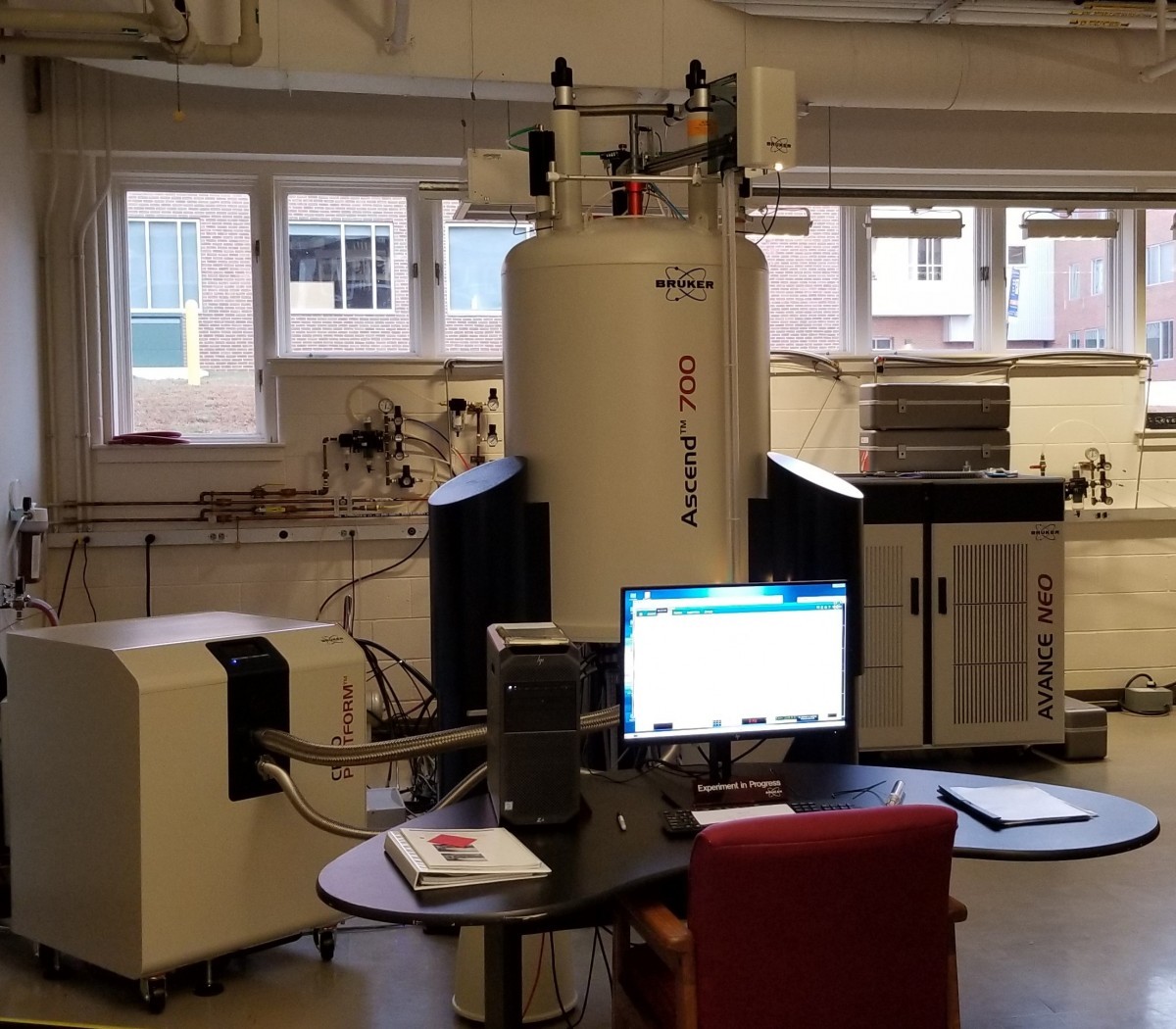
Nuclear Magnetic Resonance (NMR) spectroscopy is a powerful analytical technique in the field of chemistry that allows scientists to study the properties and behavior of molecules. By exploiting the magnetic properties of atomic nuclei, NMR spectroscopy provides valuable insights into the structure, dynamics, and interactions of a wide range of compounds. This technique has revolutionized various fields, including organic chemistry, medicinal chemistry, biochemistry, and materials science.
In this article, we will explore 14 extraordinary facts about NMR spectroscopy that highlight its significance and impact in the scientific world. From its theoretical underpinnings to its practical applications, we will delve into the fascinating world of NMR spectroscopy and uncover the secrets it unveils. So, fasten your seatbelts and get ready for a journey into the realm of nuclear magnetic resonance!
Key Takeaways:
- NMR spectroscopy uses magnetic fields to analyze molecules and has diverse applications in drug discovery, quality control, and environmental studies, revolutionizing scientific research.
- NMR spectroscopy provides non-destructive analysis, identifies unknown compounds, and aids in studying protein structures, making it an invaluable tool for scientific research and discovery.
NMR spectroscopy revolutionized scientific research
Nuclear Magnetic Resonance (NMR) spectroscopy has been a game-changer in scientific research, providing valuable insights into the structure and behavior of molecules.
NMR spectroscopy uses magnetic fields to analyze molecules
By applying strong magnetic fields, NMR spectroscopy can detect the signals produced by the nuclei of atoms within a molecule, revealing valuable information about its structure.
NMR spectroscopy has a wide range of applications
NMR spectroscopy finds applications in various fields such as pharmaceuticals, materials science, environmental analysis, and even food and beverage industry.
NMR spectroscopy can determine molecular structures
With the help of complex mathematical algorithms, NMR spectroscopy can provide detailed information about the 3D structure of molecules, helping scientists understand their properties and functions.
NMR spectroscopy is non-destructive
One of the key advantages of NMR spectroscopy is that it is a non-destructive technique, meaning samples can be reused or further analyzed after the spectroscopic analysis.
NMR spectroscopy can identify unknown compounds
Through the analysis of characteristic NMR spectra, scientists can identify unknown compounds, helping in the discovery of new drugs or understanding the composition of complex mixtures.
NMR spectroscopy can quantify chemical interactions
NMR spectroscopy can measure the strength and dynamics of chemical interactions between molecules, providing valuable insights into biological processes and drug-receptor interactions.
NMR spectroscopy is used in forensic analysis
NMR spectroscopy plays a crucial role in forensic analysis by helping identify illegal substances, analyzing counterfeit drugs, and providing evidence in criminal investigations.
NMR spectroscopy can study protein structures
Protein structures are complex and difficult to study, but NMR spectroscopy offers a powerful tool for investigating their folding, dynamics, and interactions in solution.
NMR spectroscopy helps in drug discovery
By determining the structure and interactions of drug molecules, NMR spectroscopy aids in the development of new drugs and the optimization of existing ones.
NMR spectroscopy is used in quality control
NMR spectroscopy is employed in the quality control of pharmaceuticals, ensuring they meet the required standards and contain the right ingredients in the correct amounts.
NMR spectroscopy can analyze metabolic processes
By monitoring the metabolic changes in cells and tissues, NMR spectroscopy can provide insights into disease mechanisms, helping in the development of effective treatments.
NMR spectroscopy is used in environmental studies
NMR spectroscopy enables the analysis of pollutants and environmental contaminants, aiding in monitoring and assessing the impact of human activities on the environment.
NMR spectroscopy is constantly evolving
Technological advancements continue to enhance NMR spectroscopy, improving its sensitivity, resolution, and ability to study larger molecules, opening up new possibilities for scientific research.
In conclusion, the 14 Extraordinary Facts About Nuclear Magnetic Resonance (NMR) Spectroscopy highlight the incredible impact this technique has had on various scientific fields. From elucidating molecular structures to aiding in drug discovery and environmental analysis, NMR spectroscopy continues to be an invaluable tool for researchers around the world.
Conclusion
In conclusion, nuclear magnetic resonance (NMR) spectroscopy is a fascinating field that has revolutionized our understanding of molecular structures and dynamics. Through the application of strong magnetic fields and radiofrequency pulses, NMR spectroscopy allows scientists to probe the behavior of atomic nuclei and extract valuable information about chemical compositions, molecular interactions, and even metabolic processes.The 14 extraordinary facts presented in this article highlight the versatility and power of NMR spectroscopy. From its crucial role in drug discovery and development to its application in forensic science and food analysis, NMR spectroscopy has become an indispensable tool in numerous scientific disciplines.As technology advances and new techniques emerge, the future of NMR spectroscopy looks incredibly promising. With improvements in sensitivity, resolution, and data processing, scientists can delve even deeper into the mysteries of molecular structures and unravel the complexities of chemical systems. Undoubtedly, NMR spectroscopy will continue to shape our understanding of the world around us and contribute to groundbreaking discoveries in the years to come.
FAQs
Q: What is NMR spectroscopy?
A: NMR spectroscopy is a powerful analytical technique used to study the behavior of atomic nuclei in a magnetic field. It provides valuable information about chemical compositions, molecular structures, and dynamic processes.
Q: How does NMR spectroscopy work?
A: NMR spectroscopy works by subjecting a sample to a strong magnetic field and applying radiofrequency pulses. As the atomic nuclei in the sample align with the magnetic field and then flip back, they emit energy that can be detected and analyzed.
Q: What are the applications of NMR spectroscopy?
A: NMR spectroscopy has a wide range of applications, including drug discovery, medical diagnostics, materials science, environmental analysis, and forensic investigations. It is particularly useful in studying the structure and function of organic molecules.
Q: Is NMR spectroscopy safe?
A: Yes, NMR spectroscopy is considered safe. The magnetic fields used in NMR instrumentations are strong but pose no direct harm to the human body. However, certain precautions need to be taken, such as removing any metal objects from the vicinity of the magnetic field.
Q: What are the advantages of NMR spectroscopy?
A: Some advantages of NMR spectroscopy are its non-destructive nature, high sensitivity, and ability to provide structural and dynamic information. It can also analyze complex mixtures and elucidate the mechanisms of chemical reactions.
Q: What are the limitations of NMR spectroscopy?
A: NMR spectroscopy has some limitations, such as requirement of a pure sample, sensitivity to paramagnetic substances, and limited resolution for highly complex structures. It also requires specialized equipment and expertise.
Unraveling the mysteries of NMR spectroscopy and exploring its impact on scientific research is just the beginning. Dive deeper into the fascinating world of this powerful analytical technique by discovering 10 surprising facts about NMR spectroscopy that will leave you in awe. But wait, there's more! Have you ever wondered how atoms bond together to form molecules? Prepare to be amazed by 20 captivating facts about orbital hybridization, a fundamental concept that shapes molecular structures and influences chemical properties.
Was this page helpful?
Our commitment to delivering trustworthy and engaging content is at the heart of what we do. Each fact on our site is contributed by real users like you, bringing a wealth of diverse insights and information. To ensure the highest standards of accuracy and reliability, our dedicated editors meticulously review each submission. This process guarantees that the facts we share are not only fascinating but also credible. Trust in our commitment to quality and authenticity as you explore and learn with us.


